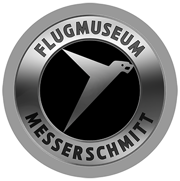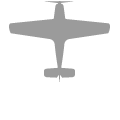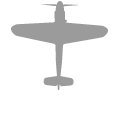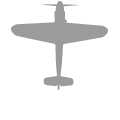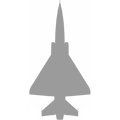NEWS / 18.07.2022
The Me 262 - the first jet-powered production aircraft
On 18 July, 80 years ago, the impatiently awaited first flight of the Me 262 with jet propulsion was about to take place in Leipheim, Germany. It was to prove what this aircraft, including its propulsion units, had been designed for.
In 1942, the Me 262 was a pioneering piece of aircraft high technology in all respects: on the one hand, because of the aircraft concept itself, and on the other hand, because of the new jet propulsion system, which had been developed in parallel with the aircraft and made ready for series production.
However, this has been preceded by discussions and developments since the mid-1930s, because the effectiveness limit for aircraft propulsion with piston engine and propeller - due to its physical properties - has been shown to be within reach. So there is an urgent need for a new propulsion idea. And the need for a new aircraft design arose from the higher speeds that then could be expected.
Hans von Ohain's air jet turbine, patented in 1937, opened the possibility for such a new type of propulsion, and Messerschmitt AG began to develop an aircraft for this type of propulsion in 1938. The design goal for Messerschmitt AG is initially a "solid" experimental aircraft - as risk-free as possible and safely controllable to fly. Simply an aircraft with benign flight characteristics. But it soon became clear that the jet fighter was breaking new ground, both technically and aerodynamically. At the same time, the Bayerische Motoren Werke, as well as Junkers-Motorenbau, had already begun to further develop jet engines for series production.
On 27 August 1939, Hans von Ohain was able to demonstrate his idea in flight as the engine for a He178. However, the further development of the propulsion units led to a continuous increase in their weight and dimensions. Depending on this, aerodynamic changes and adaptations to the airframe design also became necessary. However, the first production-ready propulsion units are still awaited at the time of the aircraft's completion.
In order to at least be able to carry out preliminary tests, Willy Messerschmitt himself suggested installing a makeshift piston engine in the nose of the aircraft. And so on the evening of 18 April 1941, in Augsburg-Haunstetten, the Me 262 takes off for the first time, powered by a propeller. In this configuration, a tail wheel was still provided. In December 1941, Junkers announced the final breakthrough: one of the development machines ran for the first time briefly at a thrust of 1000 kiloponds.
And so, on 18 July 1942, the time had finally come:
first, the experienced test pilot, Fritz Wendel, undertook several fast taxiing tests. Theoretically, the plane was supposed to take off at 180 km/h. But it did not. "During my first taxiing attempts, I reached this 180 km/h with a taxiing distance of 800 metres. I had no effect or at least no pressure on any rudder. It was simply not possible to get the tail off the ground," he reports.
In the end, "the conclusion is that the lack of propeller jet in conjunction with the large angle of attack precluded effective airflow to the rudders at these speeds. The tests showed… clearly that jet aircraft absolutely had to have nose wheel landing gear so that they would roll with small angles of attack right from the start." To remedy this design flaw in the short term, "someone...
made the suggestion to leave the throttle in at 800 metres and to induce a moment about the lateral axis by suddenly applying the brakes, which could possibly bring the aircraft into attitude," Wendel recalls. "The suggestion was plausible, the practical execution of course very risky." Wendel, however, puts all his experience to the test.
At 8.40 a.m. it's all or nothing: "After I applied the brakes, the aircraft tipped over to the front and when it reached its flight attitude, I immediately had rudder pressure and rudder effect and was able to take off immediately afterwards." Twelve minutes later he landed safely. Probably his most important summary: "My jet engines ran like clockwork". All at once, the path to a successful jet fighter becomes clear: "It was a great pleasure to fly with this machine. I was seldom as enthusiastic on a maiden flight with a new type as I was on the Me 262".
Another first-time pilot, now of Messerschmitt GmbH in Regensburg, Heinz Lohmann, also describes his flying experiences with the advanced mission aircraft a little later with equal enthusiasm: "Fabulous things preceded this fighter in the description. The enormous speed, propulsion by thrusters, a three-point landing gear - these were all mind-blowing innovations," Lohmann recalls. "For me, the first time I was allowed to fly a jet fighter is still an unforgettable experience. When the plane taxied in, I gave it full power and the Me 262 lifted off the ground, hovering calmly and gaining speed and altitude." Then comes the real wow-experience: "No engine or propeller noise could be heard. Only a whisper, like when angels push you, surrounded me. With a feeling of happiness, I climbed towards the sun." Only a brief luxury for Lohmann, because "unfortunately, sober reality did not leave me much time to enjoy this unknown, new feeling. Flight characteristics, manoeuvrability, climbing ability and speed, I had to absorb all these new flying impressions... Before I could familiarise myself with everything, I had already covered a great distance". Again, Lohmann goes into raptures: "It was a majestic feeling, how the Me 262 laid into the curve. Then I zoomed over villages and forests at 900 km/h..., pulled up steeply again and was full of pride to be able to fly this fastest and most beautiful aircraft in the world."

Me 262, first flight with jet engines.
Picture © Airbus Heritage
These flight characteristics made the Me 262 a superior aircraft design to the propeller-driven aircraft of its time in terms of speed.
And all the fundamental development and design results confirmed in these first flights, as well as the further research and testing results, prove their formative effect in aviation to this day.
The collection of the Messerschmitt Museum of Flight includes a faithful replica - with modern engines - of the aircraft in airworthy condition. The aircraft’s still advanced aerodynamics become evident in the air.
EXHIBITS
QUICK ACCESS TO MESSERSCHMITT EXHIBITS
© FLUGMUSEUM MESSERSCHMITT

